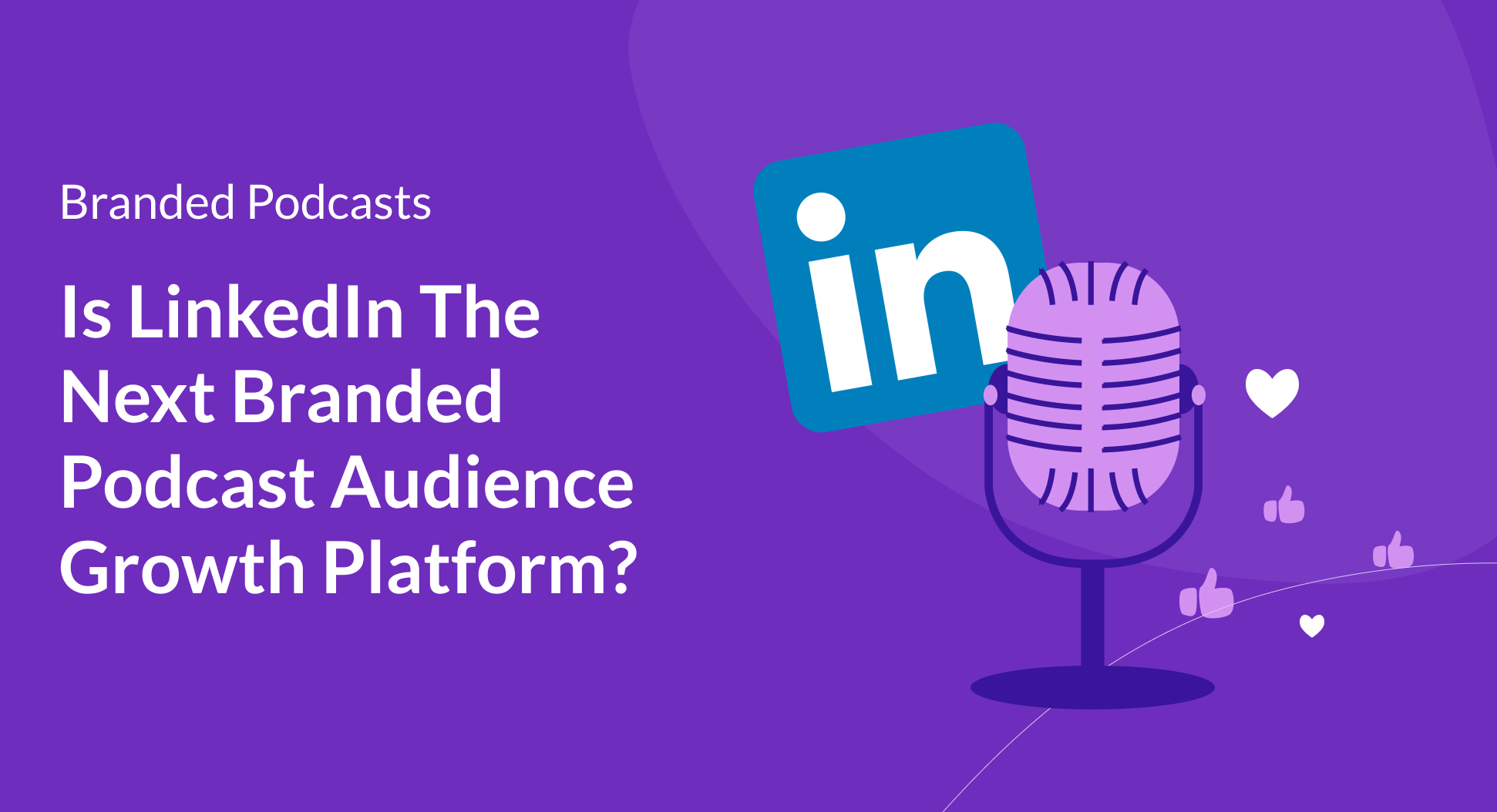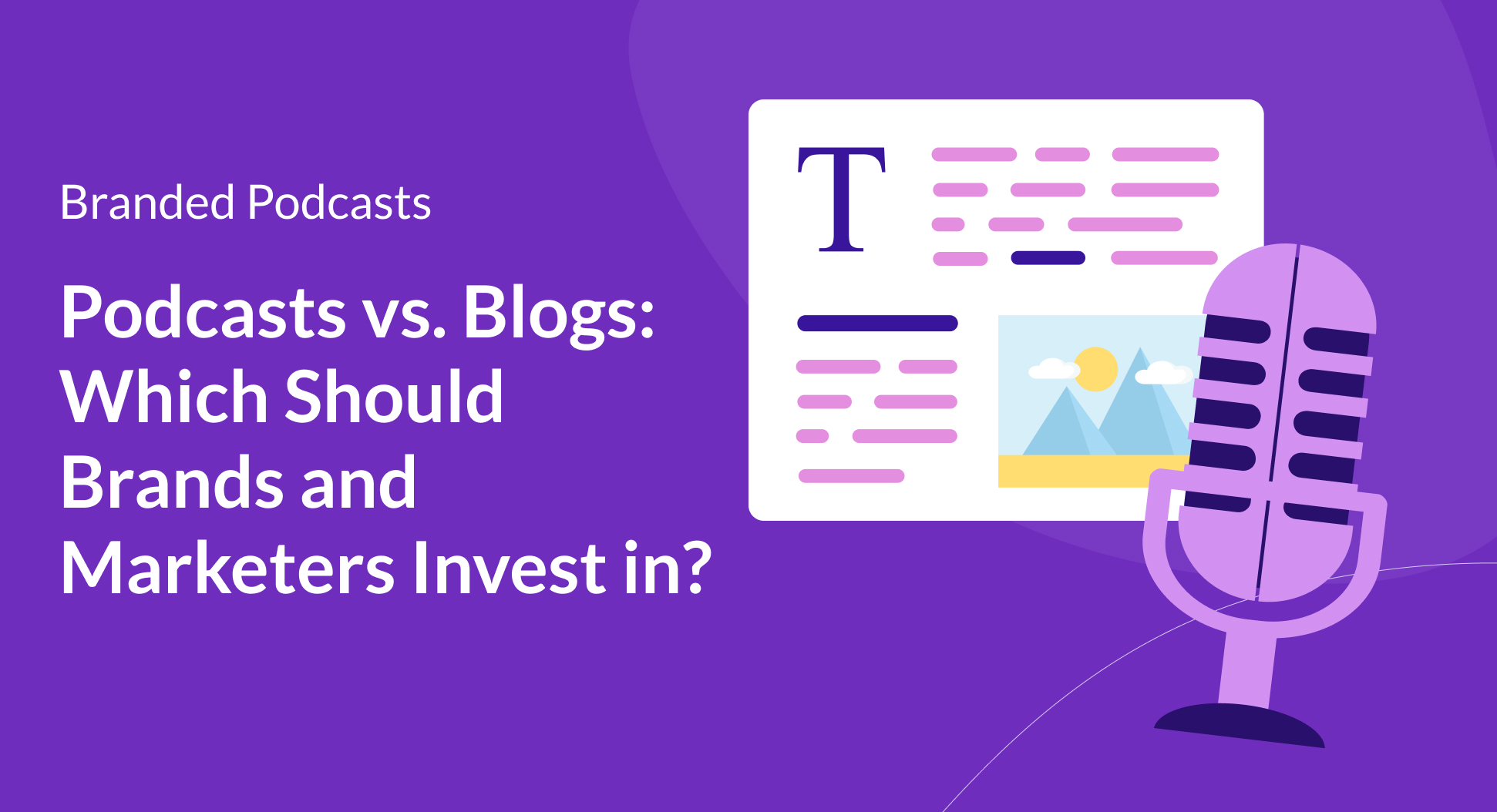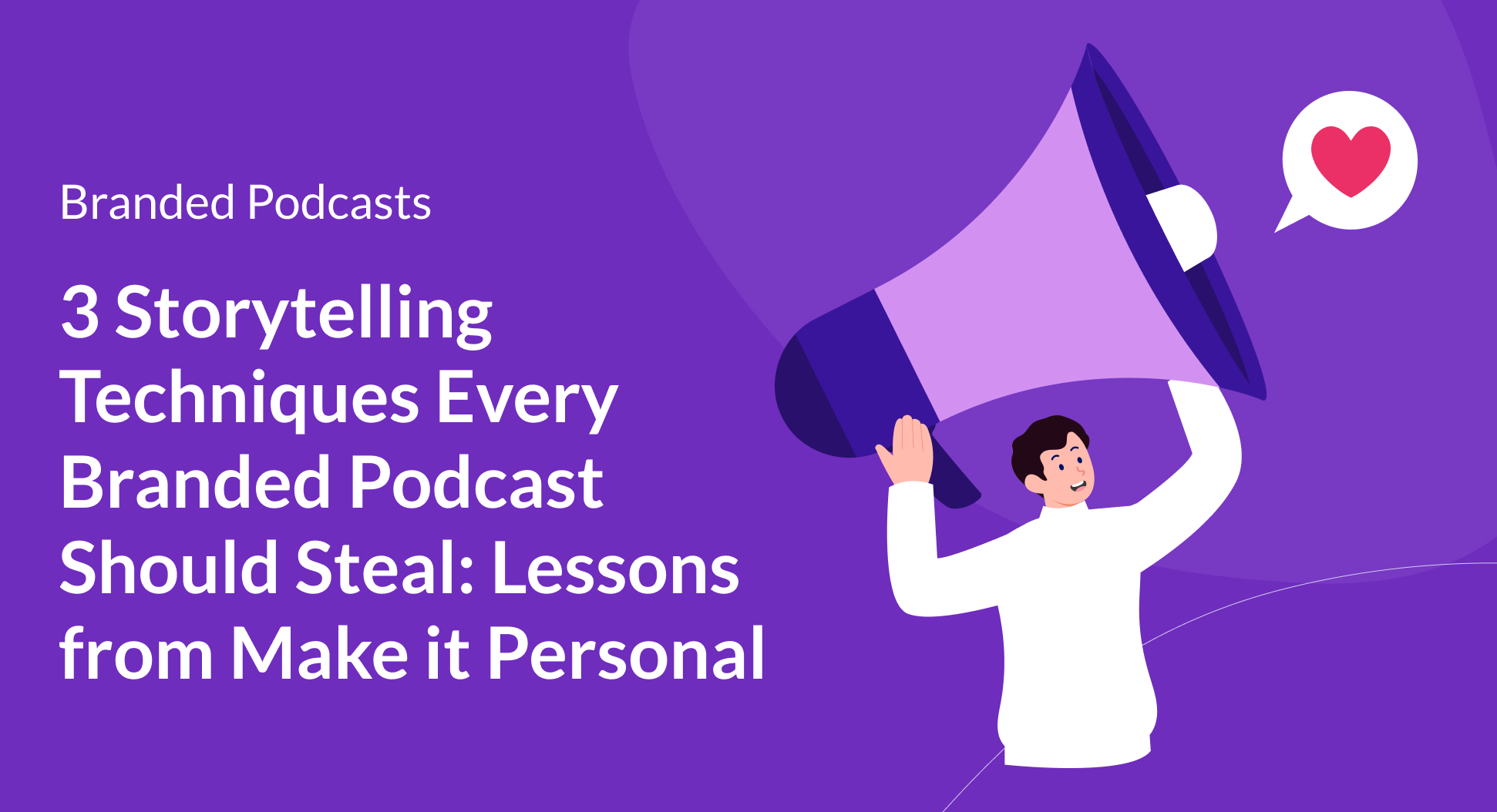Contents
When podcasters talk about marketing, the conversation usually revolves around the usual suspects: YouTube, TikTok, and Instagram. The advice is predictable: cut clips, chase trends, and pray for virality.
But there’s a platform many podcasters overlook: LinkedIn.
Yes, the platform best known for resumes, recruiters, and networking quietly holds enormous potential for branded podcast discovery — especially for shows aimed at founders and professionals.
In this blog, we’re breaking down why LinkedIn is so powerful for branded podcast discovery and how marketers can better leverage the platform to get in front of the right eyes (and ears).
Why LinkedIn is a powerful platform for branded podcast discovery
Edison Research’s Infinite Dial 2025 shows that discoverability is one of the top podcast growth challenges. This makes sense, considering we’re currently sitting at over 4 million podcasts, which makes standing out increasingly more difficult.
To cut through the noise, many brand marketers have turned to LinkedIn to connect with a motivated, professional audience actively looking for value. Here are the details:
1. Target a professional, engaged audience
LinkedIn has over 1 billion members, but its audience isn’t just large — it’s highly intentional. Unlike other platforms where users scroll passively, LinkedIn members actively seek insights, case studies, strategies, and tools that help them succeed in their careers or businesses.
For podcast marketers, this is invaluable. Audiences here are already primed for long-form, thoughtful content. A podcast episode that shares leadership lessons, marketing strategies, or creative insights is more likely to be discussed, shared, and remembered.
Moreover, LinkedIn is home to niche professional communities — groups focused on tech, marketing, finance, entrepreneurship, and creative industries. Sharing podcast episodes in these communities allows creators to reach highly targeted audiences who are genuinely interested in the content.
Of course, this relies on your niche actually being on LinkedIn. While we suggest tapping into Advanced Audience Demographics and B2B Analytics to learn more about who your listeners really are (both inside and outside of work), here are the top seven industries on LinkedIn to give you a good sense of the people on the platform:
- Financial services
- Information technology and services
- Hospital & healthcare
- Construction
- Retail
- Education management
- Accounting
2. Organic potential
On LinkedIn, organic reach is still king. While TikTok, Instagram, and YouTube increasingly favor paid promotion and algorithm-optimized trends, LinkedIn’s algorithm continues to reward thoughtful engagement. We can see this in the numbers, with LinkedIn ads having an average of 0.5% CTR compared to organic posts that have an average CTR of 4%.
According to Hootsuite’s 2025 LinkedIn algorithm guide, posts that spark likes, comments, and shares get amplified to a wider audience. This means that a single post promoting a podcast episode can reach hundreds of potential listeners without spending a dollar on ads.
On top of this, we suggest tagging colleagues, engaging with people in the comments, or providing updated context in the comment section to create exposure far beyond the initial post.
Additionally, LinkedIn allows creators to experiment with multiple formats — text posts, carousels, polls, and video clips. Each format can engage a different segment of your audience, giving you multiple touchpoints to capture attention and drive discovery (but we’ll come back to this later).
3. Context builds credibility
On platforms like TikTok or Instagram, your podcast exists alongside viral memes, trending music, and bite-sized entertainment. On LinkedIn, it exists alongside your professional identity, expertise, and industry connections. That context adds trust and credibility.
This effect is particularly pronounced for podcasts that deliver professional insights or industry knowledge. A product marketing podcast, for example, gains extra authority when shared alongside posts about industry trends, leadership lessons, or business strategy. LinkedIn essentially provides built-in social proof: your professional network signals that your content is credible, encouraging others to listen.
Furthermore, posts that include quotes, data points, or actionable takeaways perform well because they are immediately useful to the audience. When a LinkedIn user can apply something from your episode in their work or share it with colleagues, your podcast moves from entertainment to practical, career-enhancing content — a huge differentiator in crowded podcast categories.
Tips for promoting your branded podcast on LinkedIn
Now that you understand why LinkedIn is such an important platform for podcast marketers, let’s dive into the best practices:
Think LinkedIn-first
LinkedIn-first promotion means designing content specifically for the platform:
- Storytelling posts
- Carousels highlighting key takeaways
- Short videos that start a conversation
Like any social platform, audiences have certain expectations of what they’ll come across on LinkedIn, and it’s important to play into the written and unwritten rules of the platform.
Professional audiences engage differently from TikTok users — they respond to thoughtfulness, relevance, and context. Crafting posts with this in mind positions your podcast as a credible, valuable resource, not just another link vying for attention.
For example, storytelling is particularly powerful on LinkedIn. Instead of “New episode out now,” share a challenge your guest overcame, a surprising lesson, or a behind-the-scenes moment from recording.
Posts that open with curiosity or a relatable hook naturally draw people in, making your episode the next logical step to explore. Remember – LinkedIn users are looking for ideas that improve their work and life – not just a casual scroll.
Be consistent
Just as your podcast relies on a schedule, your LinkedIn presence should too. A predictable cadence, whether that’s weekly episode highlights, lessons from guests, or discussion threads, keeps your podcast top-of-mind and signals reliability.
Every post is a chance to reinforce your brand, showcase expertise, and invite engagement. It also trains the LinkedIn algorithm to favor your content, increasing organic reach without any extra ad spend. Think of it as creating a mini content ecosystem where each post amplifies the others.
But remember, consistency doesn’t mean boring repetition. Rotate formats — carousels, polls, short text posts, or video snippets — to keep your audience engaged. Predictable scheduling plus varied content gives your listeners a reason to return and your posts a chance to travel further across networks through shares and comments.
Engage with your followers
Loyal listeners aren’t born in a vacuum. Respond to comments, ask follow-up questions, and encourage conversation. Even small gestures, like acknowledging insights from your audience or highlighting user-generated content, transform passive scrollers into active supporters.
Engagement also signals value to LinkedIn’s algorithm. Posts that spark meaningful discussion are more likely to appear in feeds beyond your immediate connections, creating a ripple effect of visibility among professionals in your industry and niche.
Plus, when listeners see the host actively participating in conversations, sharing additional insights, and valuing feedback, trust grows.
And trust is a long-term growth driver. Loyal listeners recommend your podcast to peers, subscribe to your newsletter, and participate in your community, extending the reach of your work far beyond any single post.
Track your analytics
What gets measured gets improved — and LinkedIn is no exception.
Analytics allow you to refine your strategy. Maybe story-driven posts outperform episode announcements, or carousels generate more shares than videos. By identifying patterns, you can double down on what works, tweak what doesn’t, and experiment confidently with new formats.
Plus, tracking metrics helps you demonstrate ROI to stakeholders. Showing growth in audience engagement or community building through podcast posts on LinkedIn underscores the show’s value and justifies continued investment.
Here are some metrics we suggest tracking:
- Post impressions: Measures how many times your post appears in someone’s feed, giving insight into your content’s reach.
- Click-through rate (CTR): Tracks how many people clicked on your podcast link or content, showing how compelling your call-to-action is.
- Engagement rate: Combines likes, comments, and shares relative to impressions, revealing which posts resonate most with your audience.
- Comments & replies: Indicates the depth of audience interaction and sparks conversation, helping build a loyal community.
- Shares: Shows how often your content is being spread by others, extending reach beyond your immediate network.
- Click-to-listen conversions: Use Tracking Links to see how many users move from LinkedIn to actually listening to your podcast, showing the true impact of your promotion.
What kind of LinkedIn content should I post to promote my branded podcast?
Like with most things, not all LinkedIn content is created equal. Here are our suggestions for brands in podcasting looking to stand out on the platform:
Before and after strategy
A simple announcement, “Episode 5 is live!” rarely drives engagement. That’s why we suggest using the before-and-after strategy to flip the script.
Before the episode drops, tease your audience with intriguing questions, behind-the-scenes clips, or key challenges your guest tackled. This builds anticipation and positions your audience to care about the story before it’s even published.
After the episode, follow up with highlights, lessons, or quotes from your guest. Share actionable takeaways, surprising moments, or reflections on the conversation. These posts not only extend the lifespan of your content but also give followers multiple touchpoints to engage with your podcast.
Story-driven posts
LinkedIn thrives on stories. Instead of promoting episodes with a dry link, frame the content around a lesson, conflict, or insight from your guest. A compelling narrative draws people in emotionally, making them more likely to engage and click through to listen.
Personal hooks work especially well. Sharing your own reflections, challenges, or “aha” moments alongside the episode humanizes your podcast and connects it to your audience’s experiences. LinkedIn audiences reward authenticity, and story-driven posts naturally spark comments and shares.
Over time, story-focused promotion builds a narrative around your podcast itself. Each episode contributes to a larger story your audience can follow, creating continuity and anticipation for what’s next. This approach transforms casual viewers into invested listeners.
For some inspiration, check out this post from Northwestern Mutual:
Carousels
Carousels allow you to highlight key takeaways, insights, or step-by-step lessons from your episodes in a visually digestible format. Each slide is an opportunity to reinforce value and entice the reader to listen to the full story.
To maximize impact, start with a strong hook on the first slide, keep text concise, and end with a clear call-to-action, like inviting readers to hear the full episode or visit your podcast website. Done well, carousels position your podcast as both informative and visually engaging, giving it a competitive edge on the platform.
I love this example from Sam Dunning, who shares his learning after interviewing over 400 B2B marketing leaders on his podcast:
Interactive posts
Polls, questions, and prompts make your audience an active participant rather than a passive observer. Plus, they not only spark conversations but also allow you to gather insights about your listeners’ preferences or challenges, which can feed back into your podcast strategy.
Importantly, these posts are also highly favored by LinkedIn’s algorithm. Content that drives engagement is more likely to appear in followers’ feeds, expanding reach organically. Asking for opinions, predictions, or experiences creates a two-way dialogue that strengthens loyalty and community.
Video clips and audiograms
Video and audiograms are the closest you can get to “sampling” your podcast directly on LinkedIn. Short clips of key moments, quotes, or insights give followers a taste of the episode without asking them to leave the platform immediately.
Keep clips concise —30 to 60 seconds is usually enough to intrigue without overwhelming. Pair them with captions and visual branding to ensure the content is accessible, even with sound off, and reinforces your podcast identity.
Video content also stands out in the feed. Movement and sound naturally draw attention, increasing the likelihood of clicks, comments, and shares – it’s even been reported that video content brings in 48% more views than static content. When done consistently, these clips not only drive listeners but also position your podcast as dynamic, professional, and engaging.
See this strategy in action on NEI’s LinkedIn:
Are you ready to take your branded podcast content to LinkedIn?
So, it turns out that LinkedIn isn’t just a network for resumes, recruiters, and corporate updates — it’s a great spot for branded podcast growth.
The platform gives you access to a highly intentional, professional audience that’s actively seeking insights, strategies, and stories they can apply in their work and life. For marketers, that means every post is an opportunity to connect with listeners who are genuinely interested in what you have to share.
Success on LinkedIn comes from showing up consistently, engaging thoughtfully, and experimenting with formats that highlight your podcast’s value — story-driven posts, carousels, interactive polls, and short video clips or audiograms. If you haven’t already, tap into LinkedIn to turn casual connections into engaged listeners and spark real conversations around your podcast.
For more branded podcast tips like these, subscribe to our bi-weekly newsletter, The Branded Podcaster.






.png)

.png)




.png)
.png)
.png)
.png)